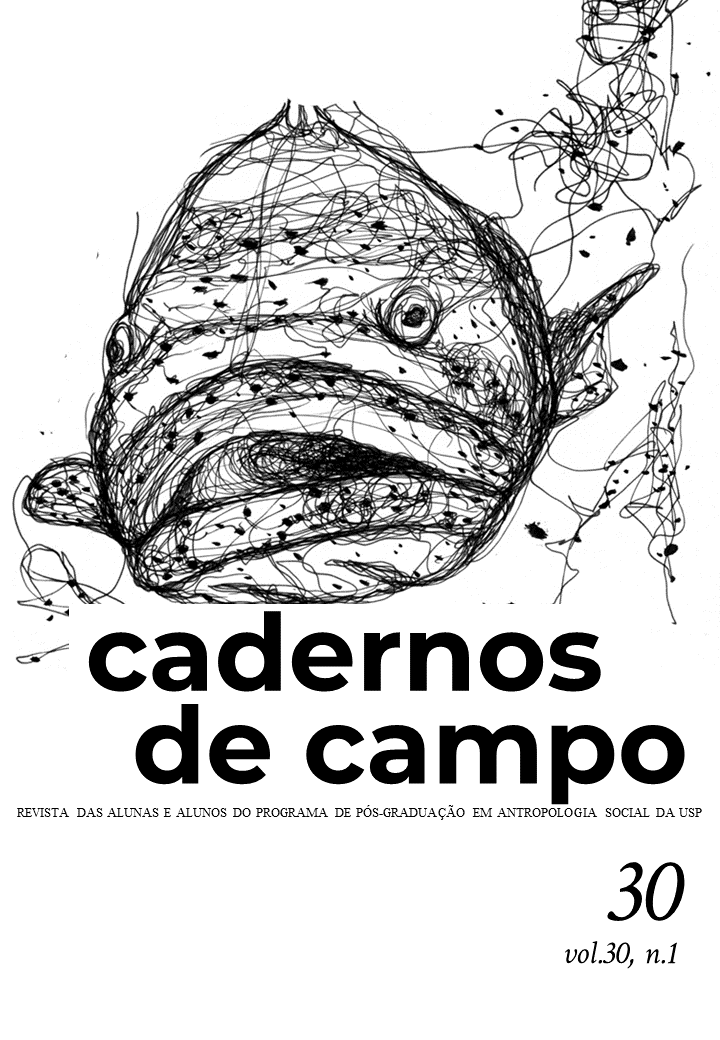Like sparks: a sketch of the most vivid image of progress
DOI:
https://doi.org/10.11606/issn.2316-9133.v30i1pe171164Keywords:
History, Progress, Memory, SilencingAbstract
The assay aims to reflect upon the inherences of capitalism’s economic and technological progress in the contemporary society, considering, above all, the adverse side of this progress, its trails, and its sparks. Inspired by the writings of Walter Benjamin, I propose this interpretation from the allegorical image of the fire, which was awakened in me by visiting burnt down cane fields in Sao Paulo. Since those occurrences, other fragments have been brought to this essay to unveil possible layers of meaning to the fire and, thus, this progress. Categories such as history, memory, and memoricide intertwine the words presented here, aiming to illustrate how these fragments are rooted in the debris, which, dialectically, engage remembrance and forgetfulness. Similarly, they are rooted in the inherences of the progress, which, according to Benjamin, would drive humanity towards a catastrophe.
Downloads
References
ADORNO, Theodor. W. 1985 [1932]. L'idée de l'histoire-nature (exposé du 15-7-1932 à la Kant-Gesellschaft). Tradução de D. Philippe. In: L'Homme et la société, n. 75-76. Synthèse en sciences humaines. p. 107-116.
BACHELARD, Gaston. 1989. A chama de uma vela. Tradução de Glória de Carvalho Lins. Rio de Janeiro: Editora Bertrand.
BEIGUELMAN, Giselle. 2019. A beleza será convulsiva ou não será, mas também será compulsiva ou não será. In: BEIGUELMAN, Giselle. Memória da amnésia política do esquecimento. São Paulo: SESC, p. 214-218.
BENJAMIN, Walter. 1984. Alegoria e o drama barroco I. In: BENJAMIN, Walter. Origem do drama barroco alemão. Tradução de Sérgio Paulo Rouanet. São Paulo: Editora Brasiliense, p. 181-210.
BENJAMIN, Walter. 1985. Sobre o conceito de História. In: BENJAMIN, Walter. Obras escolhidas I: Magia e Técnica, Arte e Política. Tradução de Sérgio Paulo Rouanet. São Paulo: Editora Brasiliense, p. 222-232.
BENJAMIN, Walter. 1987. Alarme de incêndio. In: BENJAMIN, Walter. Obras escolhidas II: Rua de mão única. Tradução de Rubens Rodrigues Torres Filho e José Carlos Martins Barbosa. São Paulo: Editora Brasiliense, 45-46.
BRASIL. 2009. Decreto 6.961 de 17 de setembro de 2009 - aprova o zoneamento agroecológico da cana-de-açúcar e determina ao Conselho Monetário Nacional o estabelecimento de normas para as operações de financiamento ao setor sucroalcooleiro, nos termos do zoneamento. Brasília: Diário Oficial da União, 18 set. 2009. Seção 1, p.1.
FOGO In: Michaelis - dicionário de língua portuguesa. São Paulo: Editora Melhoramentos, 2019. Disponível em: https://michaelis.uol.com.br/moderno-portugues/busca/portugues-brasileiro/fogo/. Acesso em 15/11/2019.
G1. VÍDEOS Agro: A indústria-riqueza do Brasil. Disponível em: https://g1.globo.com/economia/agronegocios/agro-a-industria-riqueza-do-brasil/playlist/videos-agro-a-industria-riqueza-do-brasil.ghtml. Acesso em 04/03/2020.
HALBWACHS, Maurice. 1990. A memória coletiva. Tradução de. Laurent León Schaffter. São Paulo: Edições Vértice.
KLEE, Paul. Angelus Novus. 1920. Oil transfer and watercolor on paper, 31.8 x 24.2 cm. The Israel Museum, Jerusalem.
LÖWY, Michael. 2005. Walter Benjamin: o aviso de incêndio. Uma leitura da tese “Sobre o conceito de história”. Tradução de Wanda Nogueira Caldeira Brant. São Paulo: Boitempo.
MELO NETO, João Cabral de.1980. Fogo no canavial. MELO NETO, João Cabral de. In: A escola das facas: poesia 1975 a 1980. Rio de Janeiro: José Olympio Editoria, p.31.
NORA, Pierre. 1993. Entre memória e história: a problemática dos lugares. Tradução de Yara Aun Khoury. In: Projeto História, vol. 10: p. 07-28.
RENÓ, Regina. 1999. 500 anos. São Paulo: FTD.
Downloads
Published
Issue
Section
License
Copyright (c) 2021 Cadernos de Campo (São Paulo, 1991)

This work is licensed under a Creative Commons Attribution-NonCommercial-ShareAlike 4.0 International License.
I authorize Cadernos de Campo Journal of Anthropology to publish the work of my authorship/responsibility, as well as I take responsibility for the use of images, if accepted for publication.
I agree with this statement as an absolute expression of truth. On my behalf and on behalf of eventual co-authors I also take full responsibility for the material presented.
I attest to the unpublished nature of the work submitted





